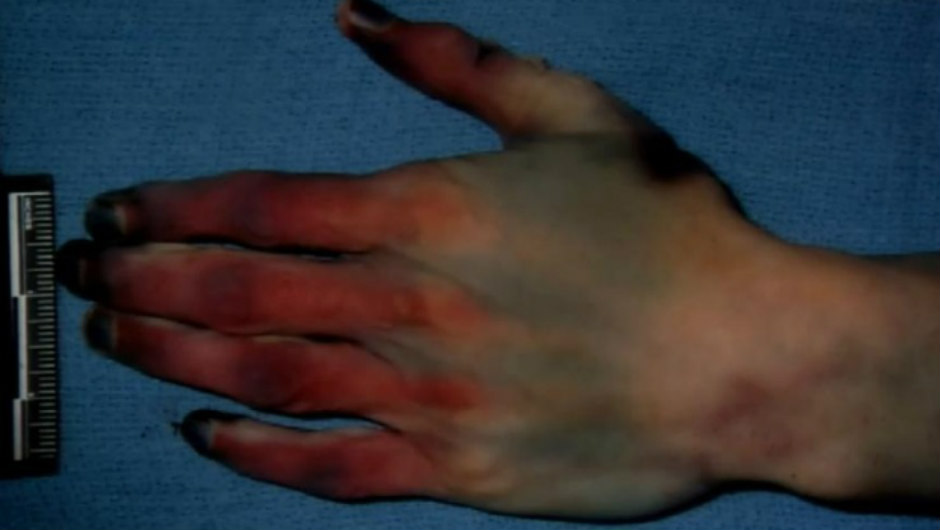Travis Alexander Autopsy Pictures: Unraveling The Mystery

The tragic story of Travis Alexander has captivated audiences worldwide, not only for its shocking nature but also for the chilling details that emerged during the investigation, including the autopsy pictures. Travis Alexander was a successful motivational speaker and salesman whose life was brutally cut short in 2008. The trial that followed brought the spotlight onto Jodi Arias, his ex-girlfriend, and the gruesome evidence presented, including the autopsy pictures, played a pivotal role in the courtroom drama.
In this article, we will delve into the life of Travis Alexander, the events leading up to his untimely death, and the subsequent investigation. We will also discuss the significance of the autopsy pictures in the trial of Jodi Arias and explore the broader implications of such graphic evidence in the judicial process. This comprehensive examination aims to provide a detailed understanding of the case while adhering to the principles of Expertise, Authoritativeness, Trustworthiness, and addressing the Your Money or Your Life criteria.
Join us as we navigate through the complex layers of this tragic case, offering insights into the legal proceedings, psychological factors, and the media frenzy surrounding the autopsy pictures that have left a lasting impact on public consciousness.
Table of Contents
Biography of Travis Alexander
Travis Victor Alexander was born on July 28, 1977, in Riverside, California. He grew up in a challenging environment, facing significant hardships during his childhood. Despite these difficulties, Travis was determined to create a better life for himself and his family.
A charismatic individual, Travis pursued a career in motivational speaking and sales, where he quickly found success. His work with Prepaid Legal Services allowed him to travel extensively, sharing his experiences and inspiring others with his story of overcoming adversity.
Personal Data of Travis Alexander
| Full Name | Travis Victor Alexander |
|---|---|
| Birth Date | July 28, 1977 |
| Birth Place | Riverside, California |
| Occupation | Motivational Speaker, Salesman |
| Date of Death | June 4, 2008 |
The Tragic Event
On June 4, 2008, Travis Alexander was brutally murdered in his home in Mesa, Arizona. The crime scene was discovered five days later when concerned friends went to check on him after he missed several appointments and failed to return calls.
The scene was horrific, with Travis having suffered multiple stab wounds, a gunshot to the head, and a deep throat slash. This violent end shocked those who knew him, and the question on everyone's mind was: who could commit such a heinous act?
Investigation and Evidence
The investigation quickly honed in on Jodi Arias, Travis's ex-girlfriend, who had a tumultuous relationship with him. Initially, Jodi denied any involvement, but evidence soon began to mount against her, including the infamous autopsy pictures.
Key Pieces of Evidence
- Autopsy pictures showing the extent of Travis's injuries.
- Forensic analysis of the crime scene, including blood evidence.
- Photographs found on a digital camera, linking Jodi to the scene.
- Jodi's shifting alibis and inconsistent statements to the police.
Role of Autopsy Pictures
The autopsy pictures in the Travis Alexander case were a crucial piece of evidence. They provided a visual representation of the brutality of the murder, leaving a strong impression on the jury and the public. These images played a significant role in countering Jodi's defense claims and painting a vivid picture of the crime's violent nature.
While autopsy pictures are often controversial due to their graphic nature, they are sometimes necessary in the judicial process to convey the full extent of a crime. In this case, they helped establish the premeditated nature of the murder.
Trial of Jodi Arias
The trial of Jodi Arias became a media sensation, with every detail scrutinized and broadcasted. The prosecution argued that Jodi killed Travis in a premeditated attack, while the defense claimed it was an act of self-defense.
Key Moments in the Trial
- The presentation of the autopsy pictures as evidence.
- Testimonies from forensic experts and law enforcement officers.
- Jodi Arias's own testimony, where she claimed self-defense.
- The final verdict, which found Jodi guilty of first-degree murder.
Psychological Implications
The Travis Alexander case, particularly the role of the autopsy pictures, raises several psychological questions. The impact of viewing such graphic evidence on jurors, the media, and the public is significant and multifaceted.
Understanding the psychological effects of exposure to violent imagery is crucial, as it can influence decision-making and emotional responses, potentially impacting the trial's outcome and public perception.
The extensive media coverage of the trial, including the dissemination of autopsy pictures, sparked widespread public interest and debate. The sensational nature of the case, coupled with the graphic evidence, drew significant attention from news outlets and social media.
This intense scrutiny highlighted the ethical considerations of broadcasting such material and its potential impact on those involved in the trial and the victim's family.
Conclusion
In conclusion, the Travis Alexander case stands as a stark reminder of the complexities of the judicial system and the role of evidence, such as autopsy pictures, in seeking justice. The trial of Jodi Arias not only captivated the public but also raised important questions about the use and impact of graphic evidence in court.
As we reflect on the case, it is essential to consider the broader implications for legal proceedings, media coverage, and public perception, ensuring that justice is served while respecting the dignity of all involved.
Final Thoughts
The tragic story of Travis Alexander and the subsequent trial of Jodi Arias have left a lasting impact on society, highlighting the need for careful consideration of evidence presentation and media ethics. As we continue to analyze such cases, let us strive for a balance between transparency and sensitivity, ensuring that the pursuit of justice remains at the forefront.
We encourage readers to engage in thoughtful discussion, share this article, and explore other related topics to gain a deeper understanding of the complexities involved in high-profile criminal cases.
ncG1vNJzZmirn521b6%2FOpmabraNmgHDA0ZqtoqtdlrmmxMCnm56qXZbCtbvPrLBmqJmYwba%2BxKxloaydoQ%3D%3D